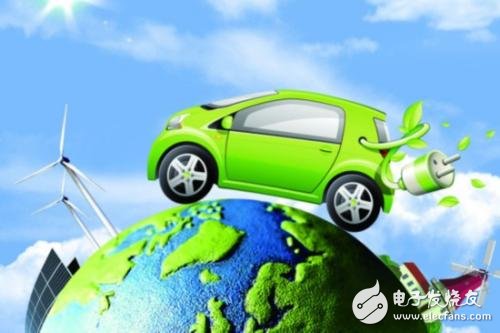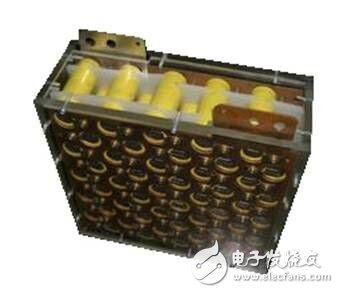New energy vehicles (NEVs) are powered by unconventional fuels or advanced power systems that integrate vehicle control and drive technologies. These vehicles represent a significant technological advancement, combining new materials, structures, and energy solutions. At the heart of these vehicles lies the new energy battery, which serves as the primary power source.

**1. Lead-Acid Battery**
Lead-acid batteries are one of the most established technologies in the automotive industry. They are widely used in electric vehicles due to their low cost and high discharge rate. For example, during the Beijing Olympics, 20 electric vehicles equipped with lead-acid batteries provided transportation services. However, these batteries have limitations in terms of specific energy, power, and energy density, which restrict the speed and range of electric vehicles.
**2. Nickel-Cadmium and Nickel-Metal Hydride Batteries**
Nickel-cadmium (Ni-Cd) and nickel-metal hydride (Ni-MH) batteries offer better performance than lead-acid batteries but come with environmental concerns due to the presence of heavy metals. Ni-MH batteries are particularly popular in hybrid vehicles, with Toyota’s Prius being a prime example. Currently, 99% of hybrid vehicles use Ni-MH batteries, with companies like PEVE and Sanyo leading the market. In China, several automakers such as Chery and Geely also use these batteries, though many still rely on imported components.
**3. Lithium-Ion Batteries**
Lithium-ion batteries are increasingly favored by automakers for their high energy density, long cycle life, and lightweight design. They offer advantages such as high voltage, large specific energy, and no memory effect. Major automakers like Ford, Toyota, and BYD have adopted lithium-ion technology in their hybrid and electric vehicles. However, challenges remain in ensuring safety and balancing charge-discharge cycles across multiple cells.
**4. Lithium Iron Phosphate (LiFePOâ‚„) Battery**
A type of lithium battery, LiFePO₄ offers enhanced safety, stability, and a longer cycle life compared to other lithium variants. It is more affordable and is gaining popularity in the automotive sector. BYD’s “iron battery†is believed to be based on this technology.
**5. Fuel Cell**
Fuel cells generate electricity through chemical reactions between hydrogen and oxygen, offering a clean and efficient power source. Proton exchange membrane (PEM) fuel cells are considered the most promising for automotive applications. Unlike traditional batteries, fuel cells function more like a power plant, continuously producing electricity as long as fuel is supplied.

**Market Trends and Production Data**
In August 2017, domestic new energy vehicle production reached 72,000 units, while sales hit 68,000. From January to August, total production was 346,000 units, and sales totaled 302,000. Power batteries, a critical component, saw significant growth, with lithium battery installations reaching 2,924.8 MWh in August alone.
CATL, a leading Chinese manufacturer, held the top position in battery installation capacity, with 1,262.41 MWh installed in August. Cumulatively, CATL accounted for 28.2% of the market share, highlighting its dominance in the sector.
**Future Outlook**
Nickel-hydrogen batteries are currently the most mature technology and will likely remain dominant for the next few years. Over time, they may be gradually replaced by lithium-ion and fuel cell technologies, which offer higher efficiency and sustainability. As the demand for cleaner and more efficient transportation grows, the evolution of battery technology will play a crucial role in shaping the future of the automotive industry.
2000w Portable Power Station
I. Basic overview
Definition: 2000W Portable Power Station is a portable energy storage power supply with built-in large-capacity lithium-ion battery and 2000 watt output power. It can provide stable power support for a variety of high-power electronic devices and small home appliances.
Application scenarios: Widely used in outdoor camping, self-driving Tours, field work, family emergency, medical rescue, photography, communication base stations and other scenarios.
Two, the main characteristics
High power output:
The rated output power reaches 2000W, which can easily drive high-power equipment, such as induction cookers, electric kettles, and small refrigerators.
Some products support peak power and may reach higher output power for a short period of time to meet instantaneous high power needs.
Large capacity battery:
It is usually equipped with a large-capacity lithium-ion battery pack that can store several kilowatt-hours (kWh) of power to ensure long-term power supply.
The battery pack uses a high-quality cell with a long cycle life and a high energy density.
Multi-interface design:
It provides a variety of output interfaces, including AC output, USB DC output, Type-C interface, car charging interface, etc., to meet the charging needs of different devices.
Multiple devices can be charged or powered at the same time.
Intelligent management system:
Some high-end models are equipped with intelligent management systems that can monitor the battery status, output power, remaining power and other information in real time.
Intelligent charge and discharge control is supported to improve efficiency and extend battery life.
Security protection mechanism:
Built-in multiple safety protection mechanisms, such as overvoltage protection, overcurrent protection, short circuit protection, temperature protection, etc.
The power supply is automatically cut off in case of an exception, ensuring the safety of users and devices.
Portability:
Despite the large power and capacity, the product design focuses on portability and is easy to carry to different scenarios.
Some products are equipped with handles or rollers for easy handling and movement.
3. Performance parameters
Output power: 2000W (rated), some products may support higher peak power.
Battery capacity: Depending on the model, it is usually in the range of several kilowatt-hours (kWh).
Charging mode: Support a variety of charging modes such as mains charging, vehicle charging and solar charging.
Interface configuration: including multiple AC output interface, USB DC output interface, Type-C interface, car charging interface, etc.
Weight and size: Depending on the specific model and design, but usually the weight is larger and requires a certain handling capacity.
2kw Solar energy system, 3.2V lifepo4 battery pack,2000W power inverter,200W solar panel,2kw Portable Power Station
Foshan Keylewatt Technology Co., LTD , https://www.klwenergy.com